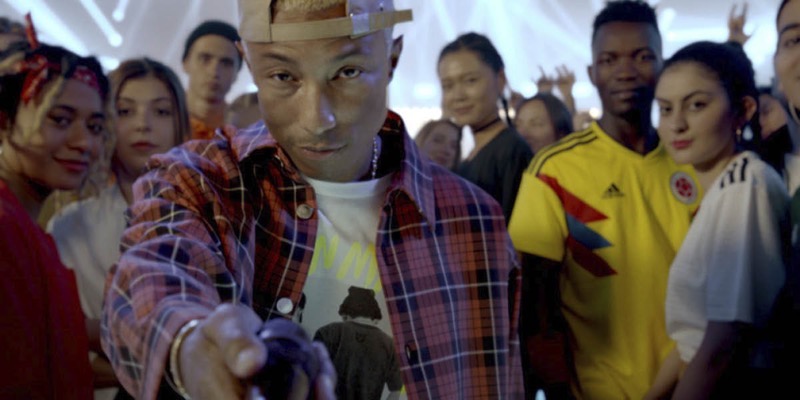
Adidas is building a media strategy that values ads not by impressions, but on the audience attention and engagement they deliver.
Adidas’ core consumers are big ad-blockers, so moving away from traditional digital media buying is the most effective way to reach its audience, said four separate executives with knowledge of Adidas’ plans. That means instead working directly with publishers and influencers that have loyal audiences, rather than relying on proxies for reach.
The company’s World Cup campaign is the clearest example to date of this strategy change. For the campaign, 56 of Adidas’ most influential ambassadors will create content for fans in New York, London, Shanghai, Tokyo, Paris and Los Angeles. Outside of football, Adidas ambassadors like record producer Pharrell Williams, tennis player Caroline Wozniacki and model Karlie Kloss will share content they developed with Adidas on their own personal channels. The second phase of the World Cup campaign will emphasize content crowdsourced from fans.
Adidas declined to detail its media strategy. A spokesperson did say that the campaign’s social rollout has been customized by platform and personalized by viewer, based on their interests and preferences, though. Fans in each of Adidas’ key cities will see a different take on an ad that speaks to cultural nuances, the rep said. Adidas-backed footballers such as Lionel Messi and Paul Pogba will also participate in the campaign, though the company is seeking to ensure the campaign’s appeal goes beyond football.
“We are inviting athletes, musicians, artists and filmmakers in adidas key cities to co-create and shape the brand narrative,” the spokeswoman said. “These images, moments and content that Adidas and makers create together will form the first-ever open-sourced campaign [from the brand] and real-time pulse of the world’s biggest sporting event.”
For years, Adidas, like many other advertisers, planned media based on impressions and used cookie data for targeting. Adidas told its agencies this approach doesn’t build lasting, valuable attention, according to the four executives, and is telling its agencies to move away from chasing short-term, vanity metrics that can be easily gamed. The advertiser’s senior marketers have talked to their agencies at length about how viewability and contextual targeting can be used to ensure quality placements.
One agency executive that works with the company summed up the shift in strategy: “Brands like Adidas are increasingly looking at distributed publishing models for their campaigns, so if you have a strong following on a platform, then you’re much more valuable to be working with as a partner or an influencer.”
Sam Fenton-Elstone, CEO of media-buying agency AIP (and not one of the aforementioned four executives), cautioned that personalizing content can come off as “gimmicky,” though.
“Once the instant surprise is over, the value of it is negligible. Building cultural attention means understanding people, communities and culture, and adding value to those groups. It takes more than data to do this,” Fenton-Elstone said. “Brands need to stay true to their identity, but speak the language and tone of the communities they are part of and the audiences they are targeting.”
More in Media

What publishers are wishing for this holiday season: End AI scraping and determine AI-powered audience value
Publishers want a fair, structured, regulated AI environment and they also want to define what the next decade of audience metrics looks like.

Media giant Essence launches a marketplace for Black women-led brands
Essence has launched WeLoveUs.shop, a new online marketplace dedicated to Black women-led brands.

In Graphic Detail: The state of AI referral traffic in 2025
The stats reveal a new audience pipeline forming outside of traditional search and social platforms.








